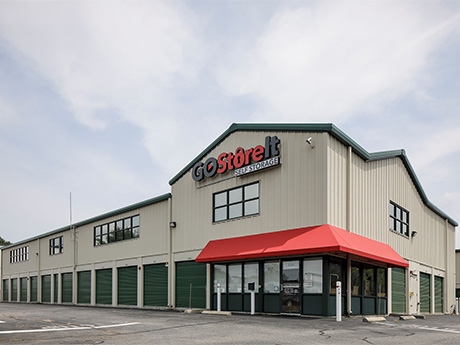By Katharine Lau, CEO and co-founder, Stuf
Following a period of slower activity throughout 2023 and 2024, the self-storage industry is showing clear signs of restored momentum in 2025.
According to StorageCafé’s Q1 2025 U.S. Self Storage Sales Report, investment sales volume in the sector hit $855 million nationwide — a notable 37 percent increase from the first quarter of 2024 — suggesting a fresh wave of investor and consumer confidence. While the commercial real estate market continues to face uncertainties, particularly with regard to persistent office vacancies, self-storage is emerging as a stable, demand-driven sector of the industry, propelled by shifting consumer behaviors, flexible business needs and creative adaptive reuse in urban markets.
Self-storage demand continues to follow lifestyle shifts. At Stuf, we’re consistently seeing strong growth in the seven markets in which we operate, especially among millennial and gen Z renters, small business owners and remote workers who prioritize proximity, convenience and security when choosing a storage solution. Consumers are increasingly prioritizing smarter spaces that fit into their regular routines.

The StorageCafé report shows that interest from large-scale, institutional investors in self-storage has rebounded in 2025, with several eight-figure transactions dotting the map in the first quarter. The largest deal was a $36 million acquisition in Davie, Fla., underscoring the heightened activity in the Sun Belt region, where self-storage development often lags behind population growth.
Los Angeles continues to be a hotbed of storage activity. Stuf, which already operates five locations in the city, is preparing to open its largest Los Angeles facility to meet this demand. We are seeing several factors driving demand in the City of Angels, including rising home prices, limited square footage and an ever-growing cohort of creative professionals and entrepreneurs who rely on storage as an extension of their workspace. With many landlords still facing high vacancy rates in office and retail properties, we’re able to activate underutilized spaces and bring new value to the building and the neighborhood.
Florida also stood out in the first quarter, with the Sunshine State seeing three major transactions in Miami, Fort Myers and Naples collectively surpassing $60 million. With population growth, new housing development and seasonal migration all contributing to storage needs, Florida is quickly becoming a hub for continued sector expansion.
In the Midwest, Chicago continues to be a quiet powerhouse. The city ranked as the most active market by number of self-storage deals — 16 in total — demonstrating consistent investor appetite.
The biggest shifts in the storage landscape are consumer demographics and expectations.
Millennials and gen Zers are driving much of the new demand. These generations are digital-first and highly mobile. They want seamless tech integration, easy access and well-designed spaces that feel secure and well-maintained.
Convenience also plays a critical role in self-storage selection. Unlike traditional storage operators whose models prioritize locations on the outskirts of cities or in hard-to-reach industrial zones, Stuf is bringing storage closer to where people live and work, and creating opportunities within repurposed office, retail or mixed-use buildings. The idea is to support the needs of fast-growing commercial clients, particularly small businesses that are looking for flexible alternatives to traditional warehousing. With the continued rise of e-commerce and remote jobs, storage is increasingly serving as an alternative to the workplace, especially for those who live in urban neighborhoods.
From an investor’s lens, the return of momentum in the first quarter reflects both macroeconomic shifts and a deeper confidence in self-storage as a resilient asset class. According to the StorageCafé report, the average transaction price per square foot stood at $146 in the first quarter of this year, indicating healthy valuations. Even as broader commercial sectors — especially office — continue to face headwinds, storage is proving to be steady.
Much of that resilience comes from how storage functions at the intersection of real estate and consumer behavior. Self-storage is a people-first industry. It’s not just about finding extra room; it’s about unlocking flexibility — whether people are downsizing, starting a business or simply reconfiguring their lifestyle. The beauty of self-storage is that it can adapt to the needs of the market while solving longstanding real estate challenges.
Self-storage is becoming an expected part of the urban experience, and we see it as a core amenity in cities where space is at a premium and life moves fast. With solid fundamentals, growing consumer demand and new capital entering the space, the self-storage sector appears primed for sustained growth through the rest of 2025. StorageCafé’s first-quarter data paints a clear picture: the lull is over, and both investors and operators are ready to meet evolving needs with smart, scalable solutions.
As we look to the future, one thing is clear: Self-storage is no longer just a fallback option; it’s a flexible, functional and valuable piece of the commercial real estate puzzle.


